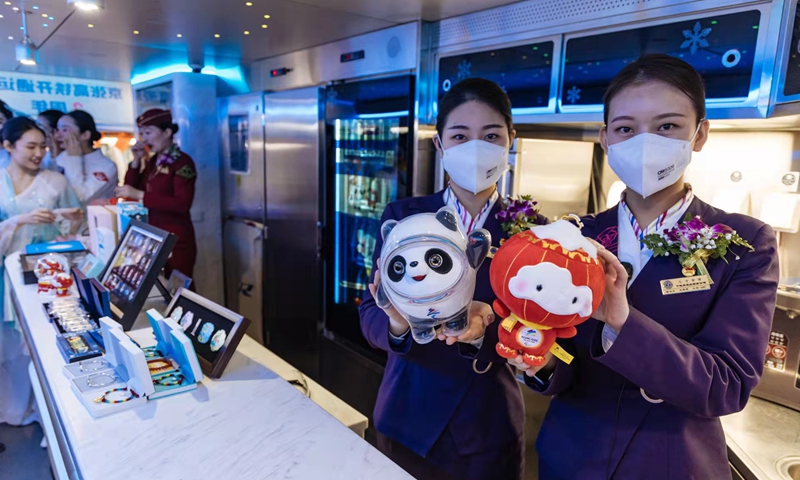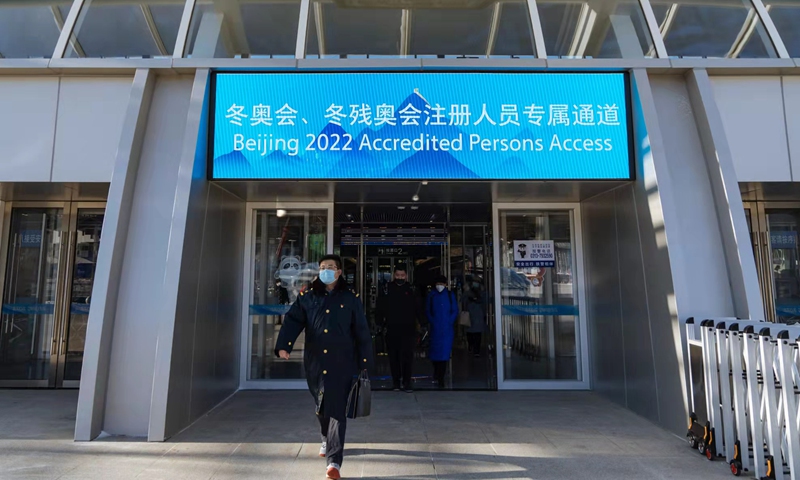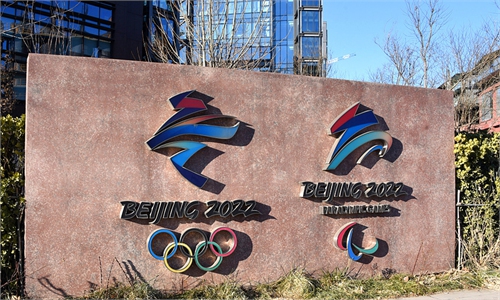Beijing-Zhangjiakou high-speed railway to adopt divided carriages to separate Olympic participants from ordinary passengers

Photo: Li Hao/GT
Following the release of the second edition of the playbook that outlines COVID-19 countermeasures to be adopted during the Beijing 2022 Olympic and Paralympic Winter Games, the Games organizers have adopted a closed-loop management for cross-city transportation, especially the high-speed railway line connecting Beijing and the neighboring Zhangjiakou, the co-host city of the Games.
Using the Beijing-Zhangjiakou high-speed trains, Olympic participants can reach the suburban Yanqing race area from Beijing in half an hour and the Chongli race area in Hebei's Zhangjiakou in one hour.
Based on the principle that Olympic participants will not have contact with ordinary passengers, Qinghe, Taizicheng and Yanqing stations along the Beijing-Zhangjiakong high-speed railway line will be divided into epidemic prevention zones and ordinary zones, Yu Shun, captain of the Beijing-Zhangjiakou high-speed railway operation team, told the Global Times on Friday.
The second edition paybook stipulates that all Olympic participants will undergo full-process, site-to-site closed-loop management. Olympics-related personnel traveling on the Beijing-Zhangjiakou high-speed railway must use special waiting areas, special entrance channels and and specially designated carriages.
Yu explained that the epidemic prevention zone is part of the biosecurity loop, in which platforms, channels, transfer zones, and working staff are all fixed. While the ordinary zones will operate normally with midway temperature measurement services on the train.

Photo: Li Hao/GT
Lü Pan, a train conductor of the Beijing-Zhangjiakong high-speed railway, told the Global Times on Friday that the eight carriages will be divided into a closed-loop management area (carriages 1-4), an ordinary passenger area (carriages 6-8) and an isolated area (carriage 5).
"There are two groups of conductors and two services teams on each train, who are unable to come into contact despite being on the same train," said Lü. "Staff on the closed-loop carriages have special channels for access and site-to-site pickups."
Yu said that the high-speed train services team has invited professionals from health authorities to conduct epidemic prevention training for all employees, including personal protection, carriage disinfection, and disposure of medical waste in accordance with standard procedures.
He said the high-speed train services team has carried out emergency response drills many times and has set up 31 emergency response plans for different emergencies.



